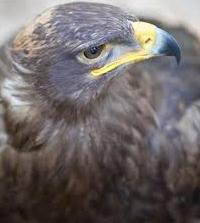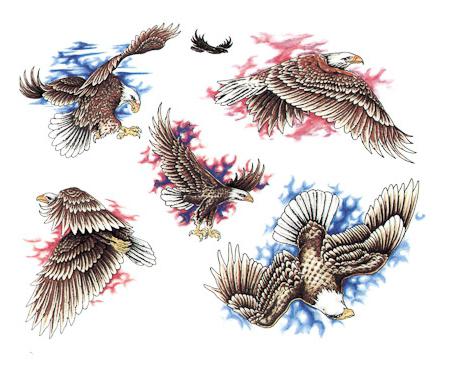Steppe eagle - a bird on the verge
A person from the king of nature turns into her killer. Technogenic and other activities deprive many animals of their natural habitat, calling into question the existence of certain species and completely destroying others. Steppe eagle - a bird that is under threat of extinction, a bird on the edge. While it can still be found in Russia, it is necessary to take a number of measures that will allow this bird to continue its existence. The number of steppe eagles on the territory of Russia is no more than 20 thousand pairs, and throughout Europe - about 25 thousand. In the Red Book, this species is assigned to the 3rd category - a rare species that can pass into the endangered due to the reduction of places and conditions of natural habitat. So what kind of bird is this eagle?

Steppe, or, as it is also called, deserted,The eagle lives in the southeast of Europe, in Mongolia, India, Africa, northwest China, Arabia. In Russia - in the semi-desert and steppe areas of the Lower Volga region, the eastern Ciscaucasia, in the south of the Urals, in the foothills of the Altai and the steppes of Transbaikalia. The center of the range falls on the territory of Tuva and Mongolia. Vast nesting grounds are found in Africa.
The separation of the Eurasian andAfrican forms of this bird in two separate species. Now the African steppe eagle is named Aquila rapax, and behind the Eurasian eagle is Aquila nipalensis.

Steppe eagle - a bird that avoids neighborhood withman. It usually settles on the unraveled territories of steppes or semi-deserts. An obligatory condition must be sufficient for the survival of the amount of food-gophers. This eagle is a stenophagus; it feeds on the same kind of food, but its shortage compels the steppe people to feed on snakes, young ungulates, foxes.
Human agricultural activitymakes the steppe eagles arrange nests on the poles of power lines, which is absolutely not peculiar to them in natural conditions - they usually arrange nests right on the ground, on small elevations or gentle slopes of small rocks. These very power lines often cause the death of young birds. Sockets are made of chips, sticks, grass, lined with tufts of wool, pieces of cloth or dung. Quite often, in addition to the main, they also arrange a spare nest. Eggs of steppe eagles lay in April, in the southern regions before. Masonry rarely exceeds 2 eggs. At the end of May - June, chicks appear who leave their native abode in the middle and end of August.
Nests of the steppe eagle are easily accessible to predators andpoachers, this is one of the reasons for the reduction of the species. The main reason was the plowing of virgin lands, steppe zones, which served as a breeding ground for these birds.
Human whim - another threat tosteppe eagles. Recently, it has become fashionable to plant falcons, use them for falconry. Sometimes nests of eagles are ruined without any sense by the near-by people. In Syria, there is a huge demand for stuffed birds, so they are captured and destroyed with impunity.
In order that the steppe eagle - a beautiful bird, and, unfortunately, rare, preserved and from the 3 category passed at least 4, which brought the recovering species of animals

First of all, it is necessary to conductexplanatory work with people living in the nesting grounds and eagles. Most simply do not know that by destroying nests and killing birds, they violate the law on the protection of rare species. In addition, they do not even know anything about these birds. Secondly, it is necessary to equip poles of power lines with effective protective devices to prevent the death of steppe eagles from electric current. Since a person has invaded the territory of the eagles, he simply has to take care of them. Thirdly, it is necessary to formalize the status of the reserved non-plowed lands on which the steppe eagles nest.
The fate of these birds is entirely in the hands of the king of nature, and it is hoped that man will make a steppe eagle a royal gift - an opportunity to live.
</ p>




